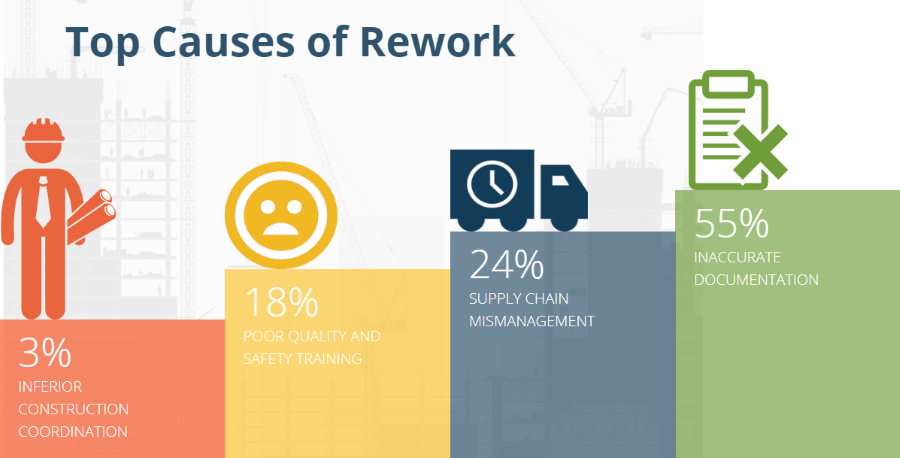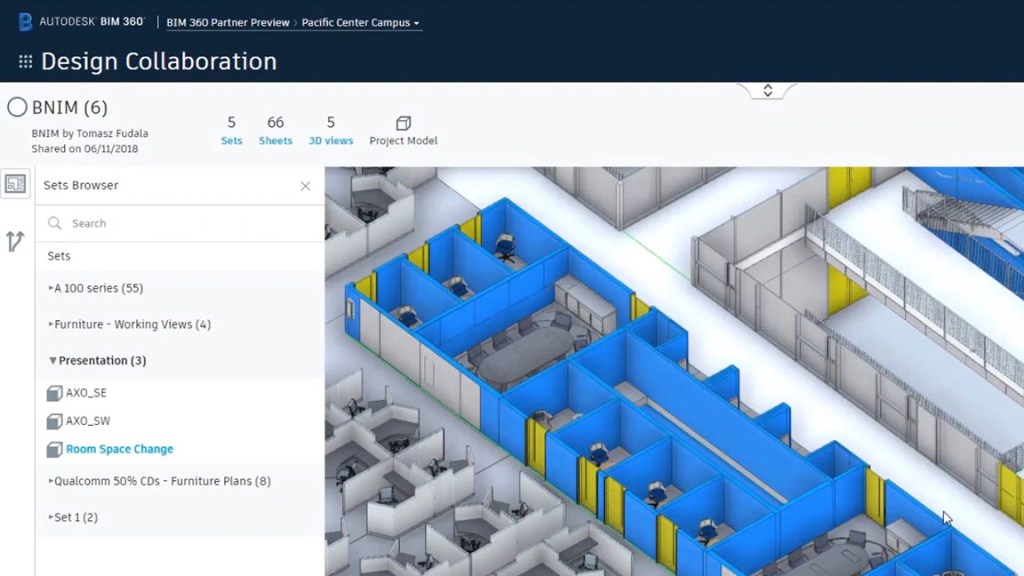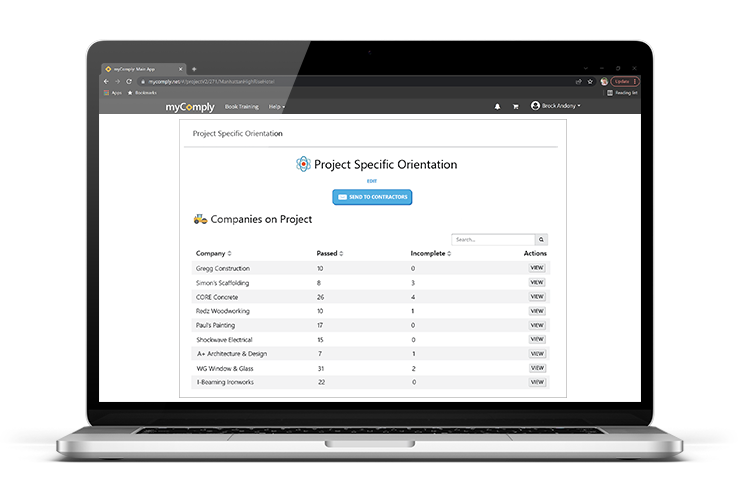Construction projects, especially large-scale ones, operate a lot like economies. They are intricate systems of supply and demand that need to operate in perfect harmony to optimize productivity and profitability. But, like economies, construction sites do not operate perfectly. And when construction sites don’t operate perfectly, construction rework occurs.
This article will define construction rework, provide construction rework statistics, the cost of rework in construction, and proven tactics to reduce the impact of rework activities on your projects.
Table of Contents
What is Construction Rework?
Rework Construction Statistics
The Causes of Rework in Construction
1. Inferior Construction Coordination
2. Poor Quality and Safety Training
3. Supply Chain Management
4. Inaccurate Documentation
How to Calculate the Cost of Rework in Construction
How to Avoid Rework in Construction
1. Adopt Construction Technology
2. Qualify Trade Partners
3. Improve Communications in the Field
4. Emphasize Quality Control
Conclusion
What is Construction Rework?
Construction rework is any unplanned construction work that is required to be done as a direct result of mistakes or missteps that were taken on a project site or throughout the planning process. Rework activity can be characterized as the deconstruction of existing work so that remedial steps can be taken.
Construction rework is unnecessary, costly, time consuming, and quite frankly, frustrating as h*ll.
Rework Construction Statistics
Before we explore the causes of rework in construction and how to calculate rework cost on your projects, let us explore some of the leading statistics surrounding rework:
- It is estimated that between 4-6% of total project costs can be attributed to rework
- Construction rework activities contribute directly to (up to) 300% in productivity losses.
- Up to 70% of all rework in construction can be traced back to engineering and design related errors.
- Another study determined that almost 80% of cost deviations on projects are related to design, while only 17% are related to construction activities.
- Of the rework related to construction activities, 48% is caused by miscommunication and 26% is caused by poor communication amongst team members.
- An estimated 30% of all work done on construction projects can be classified as rework.
So, if we sum this all up, what does it mean? It means that there is still a lot of work to do to improve the effectiveness of the design phase in construction as well as document management and transfer between various project stakeholders. It also suggests that when it comes to the construction phase of the project, that many rework activities are the result of miscommunication or a failure to communicate at all.
The Causes of Rework in Construction
Rework activities can be triggered by a variety of missteps on construction sites. That being said, there are some causes that account for a disproportionate amount of rework.
The top-four causes of construction rework are:
- Inferior construction coordination
- Poor quality and safety training
- Supply chain management
- Inaccurate documentation

Source: Autodesk
Let’s explore each of these leading contributors in greater detail.
1. Inferior Construction Coordination
Though this pool is the smallest of the rework’s “big four,” on-site coordination can still be a challenge for many construction firms and a contributing factor to rework activities.
The larger the construction projects, the larger volume of stakeholders that need to communicate and share valuable information with each other. Without effective formal communication processes in-place, the right mediums, and construction technology, information can be lost along the way, leading to mistakes that drive rework activities.
2. Poor Quality and Safety Training
When construction workers are not properly educated on the safety risks present on a project site, they are more prone to injuries on-the-job. And when they are not educated on the quality expectations of the general contractors, they are more likely to take shortcuts and not provide the highest quality of work.
That is why new worker onboarding processes need to provide deep training on both quality and safety expectations on the project.
3. Supply Chain Management
An age-old problem in the construction sector is procuring supplies at just the right time and minimizing the impact of incorrect orders or supplies. Most construction sites aren’t rich in space for material storage, so everything needs to be procured just-in-time to drive efficiency and reduce waste.
Failure to do so can lead to unnecessary idle time when workers are unable to perform their work due to the unavailability of supplies. It can also lead to rework activities if project timelines are impacted or if work is done out of order.
4. Inaccurate Documentation
If there were an Achilles heel with respect to the construction rework, it would be inaccurate documentation. Inaccurate documentation is when mistakes are made on architectural or engineering blueprints and are then translated into faulty project work. Inaccurate documentation is when project teams misunderstand the intent of written directions issued by project leadership. Inaccurate documentation is when mistakes are made in change orders.
Construction projects are rich in inaccurate documentation, but that doesn’t have to be the case. Read on to discover a formula to help you understand what exactly these rework activities are costing you and how you can take aim at reducing their impact on your projects.
How to Calculate the Cost of Rework in Construction
Rework is a costly construction activity. Be it financial burden, lost time, or simply worker frustrations—rework manifests itself in numerous ways on construction sites.
That being said, let’s focus on the direct cost of rework activities on projects. As mentioned above, rework activities generally cost roughly 5% of the total contract value on construction projects. However, a study conducted by Navigant suggested that 5% is only the cost of “reported” rework activities and that actual rework costs might fall closer to 9% of project costs.
Based on that data, calculating rework costs is simple:
Conservative estimate (on a $10 million project):
ACV x 0.05 = The cost of rework
Ex. $10,000,000 x 0.05 = $500,000
Liberal estimate (on a $10 million project):
ACV x 0.09 = The cost of rework
Ex. $10,000,000 x 0.05 = $900,000
It is staggering to consider that on a $10 million project, $900,000 of the contract value might be spent on rework activities. Now that we know the costs of rework in construction, let’s explore proven strategies to avoid and prevent it.
How to Avoid Rework in Construction
Just because the industry spends roughly 5-9% of contract value on rework activities, doesn’t mean that your firm needs to do the same. There are four proven strategies that can drastically reduce the impact of construction rework, and we are going to explore each of them in detail, as well as the causes of rework that they each mitigate.
1. Adopt Construction Technology
When one of the greatest drivers of rework activities is the inaccurate delivery of data and documentation, implementing construction technology to digitize and standardize the document transfer process should be a no-brainer.
Autodesk’s BIM 360 is one of the best ways to mitigate the risk of construction rework that stems from design coordination. This technology enables construction firms to digitize architectural and engineering renderings, make them accessible by various project stakeholders, grant certain parties the ability to make changes, manage supply of inputs, virtualize some (or all) of a build, and much more.
 Source: Autodesk
Source: Autodesk
myComply’s Projects Pro helps contractors to address more project-based documentation while also improving quality and safety training on projects. The Orientations module makes it possible to digitize new worker onboarding and improve the quality of training delivered by standardizing communications throughout the duration of projects. The Projects functionality makes it easy to secure the transfer of critical documentation, such as contracts, and manage that documentation in-platform.

Source: myComply
Causes of rework addressed:
- Poor quality and safety training
- Supply chain management
- Inaccurate documentation
2. Qualify Trade Partners
Thoroughly vetting all the subcontractors that you hire to contribute to your construction project is critical if you want to minimize the amount of rework that stems for trade-specific mistakes, inexperience, and more.
Here are some of the qualification parameters you should use to vet potential trade partners:
- General information. The first step is acquiring basic business info, such as ownership and management details, employees, licenses, areas of expertise, etc.
- Safety records. When considering a subcontractor, it is essential that you acquire their OSHA 300 information and whether they have had any citations against their experience modification rating over the past three years. Beyond that, you may also want to inquire about their internal safety programs.
- Surety and bonding information. You will need to obtain the subcontractor’s insurance provider, their agent’s name/information, as well as their bonding rates, single project bonding capacity, and aggregate bonding capacity.
- Financial stability. Most importantly, you should determine whether the subcontractor has ever filed bankruptcy, but you may also want to see details on revenues, total assets, net equity, net liability, and more.
- Litigation history. Firstly, you should inquire about any active litigation against the firm or any of its employees, then you should ask about litigation history, any past labor law violations, if they have ever had licenses removed or revoked, and if they have ever been terminated from a contract.
- References from other general contractors. Once all other information has been collected, it can be helpful to ask for references to prove the quality and dependability of the contractor.
Causes of rework addressed:
- Inferior construction coordination
3. Improve Communications in the Field
Effective in-field communications can be the difference between “deconstruct the temporary wall” and “leave the temporary wall.” When lines of communication breakdown on construction projects, mistakes are made, missteps are taken, and rework is created.
Here are the steps that you need to take to improve your in-field communications:
- Establish a formal communication chain. Everyone on a construction project should know who they are receiving comms from and who to turn to when questions arise. Typical communications structures flow from the asset owner to the general contractor, from the GC to their project management staff, from the project management to managers at each subcontractor, and from those managers down to workers.
- Use the best mediums. Email is not always the best way to deliver messaging to on-site stakeholders. Based on your experience, determine your preferred medium and enforce its usage on your projects.
- Encourage two-way communication. Ensure that lines of communication flow upstream as well, so that important questions can be asked and answered. This also serves to build trust in employees and improves engagement.
- Keep it clear and simply. Whether you are communicating a change order, a change in muster point location, or an invite for team lunch—keep the messaging as simply as possible to prevent any misunderstanding.
Causes of rework addressed:
- Inferior construction coordination
- Poor quality and safety training
4. Emphasize Quality Control
As a general contractor with a reputation to maintain, construction quality must be a priority. Quality work also prevents the need for rework triggered by deficient or inefficient attention to detail.
Ensure quality of work on projects by:
- Hire the right workers. As highlighted above, properly vetting subcontractors and hiring those with proven records is essential to driving quality production on your projects.
- Use the best materials. Never cut costs on materials and ensure that all materials being used meet the specifications that you have been provided.
- Ensure safety and compliance. Safety standards keep workers safe, but they also prevent rework by preventing shortcuts from being taken or overwork occurring. An overworked construction worker is much more prone to making mistakes than one that is well rested.
- Monitor production. It is the duty of your project staff to keep a close eye on the work that is being done on projects.
- Avoid scope creep. Keep a close eye on project timelines so that there is never a need for rushed work. If delays occur and project timelines need to be adjusted, identify those needs early so that discussions can be had with the asset owner.
Causes of rework addressed:
- Inferior construction coordination
- Poor quality and safety training
Conclusion
Rework does not have to be (and should not be) accepted as 5-9% cost on your construction projects. This article explores the leading causes of rework, frames the importance of risk aversion tactics, then provides four proven tactics that will take direct aim at reducing rework in construction projects.
Just remember the four rework reduction tactics:
- Adopt construction technology to simplify document exchange and prevent miscommunication of critical information.
- Qualify trade partners to ensure that every subcontractor conducting work on your projects is best-in-class.
- Improve communications in the field to prevent the miscommunication of key information between supervisors, workers, etc.
- Set high quality standards by educating every worker early-on and clarifying that the expectation is premium work—no shortcuts.
As highlighted above, myComply is one of the leading technologies for taking a proactive and preventative stance towards construction rework. myComply gives general contractors the power of a digital onboarding platform (to enhance training on quality standards) and a workforce management platform that unlocks the ability to transfer documents to/from subcontractors, collect worker certifications digitally, facilitate certification-based access control (to ensure that every worker is qualified to be conducting work on the project), and automate the collection of time and attendance data.
If you are interested in finding out more, then book some time with a product expert today to explore the leading construction workforce management platform for general contractors.


